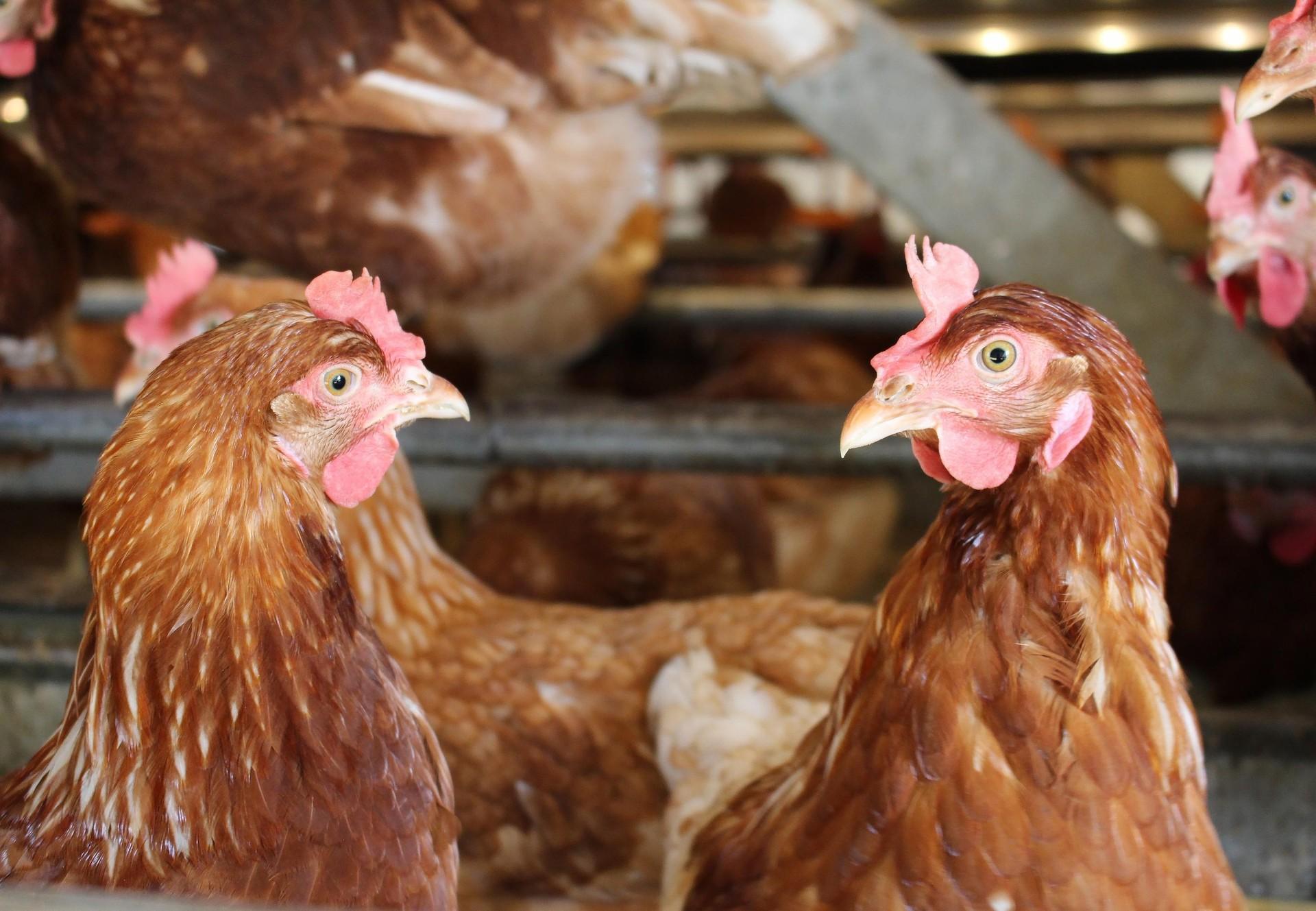Raising chickens for their eggs is a rewarding and profitable endeavor. Knowing how to maximize chicken lay in chicken husbandry is essential for any poultry farmer looking to maximize their profits. In this article, you’ll learn how to maximize your chicken lay through proper nutrition, housing, and health care. You’ll also get tips on how to identify the most productive layers and troubleshoot any issues that arise. With this information, you can easily maximize your chicken lay and increase your profits!
Benefits of Maximizing Chicken Lay
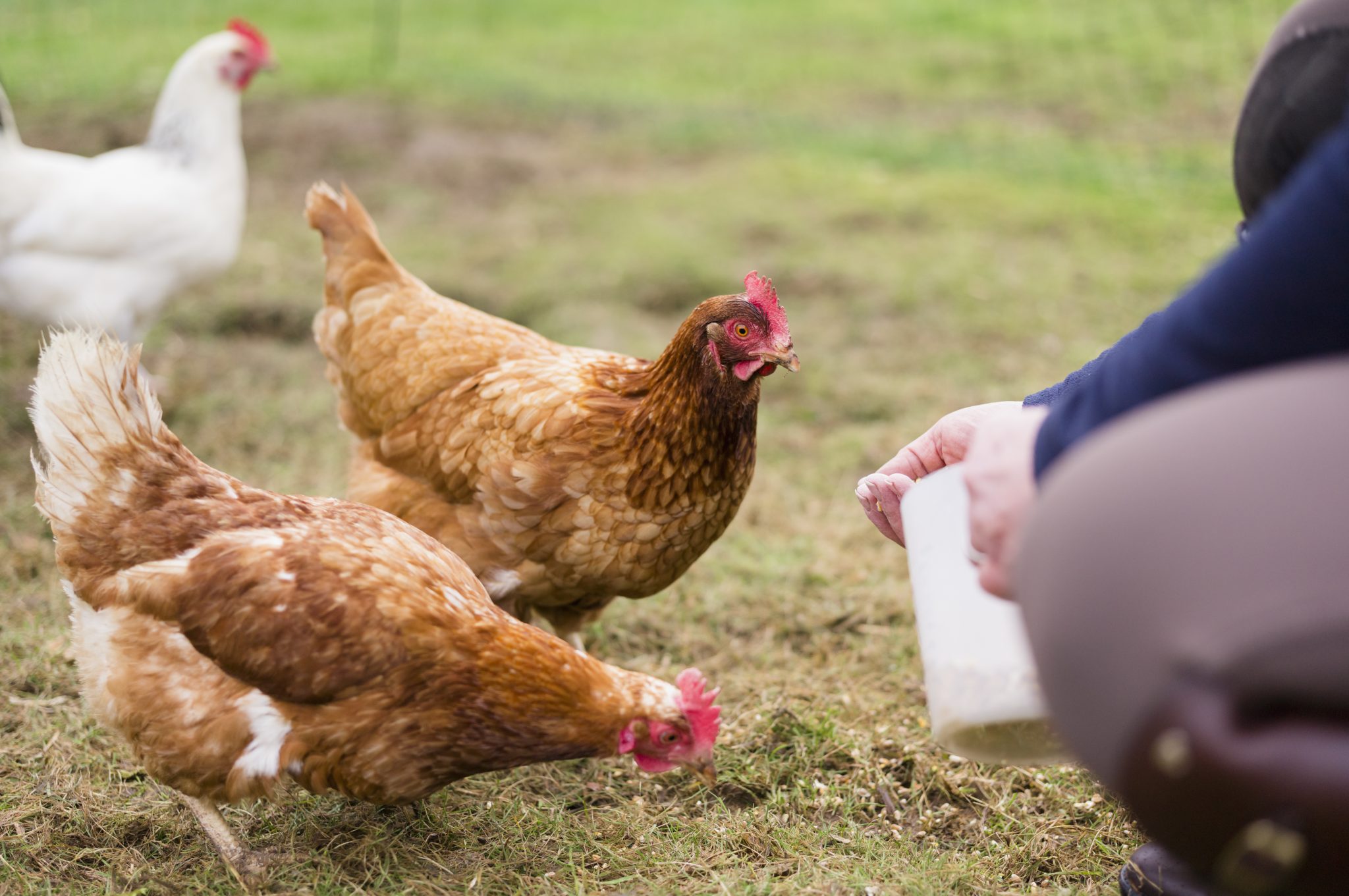
Reducing Feed Costs
Maintaining a high laying rate in chickens can significantly reduce feed costs. An optimal laying rate depends on many factors, including the age of the chickens, their health and nutrition, and the quality of their environment. By ensuring these factors are met, feed costs can be reduced by increasing egg production and reducing wastage.
Increase in Egg Production
Maximizing the laying rate of chickens can lead to a significant increase in egg production. A healthy, well-fed hen can lay up to 300 eggs per year, and many hens can lay eggs for up to five years. By providing the hens with ideal conditions, egg production can be maximised, leading to a greater return on investment.
Health and Nutrition Requirements
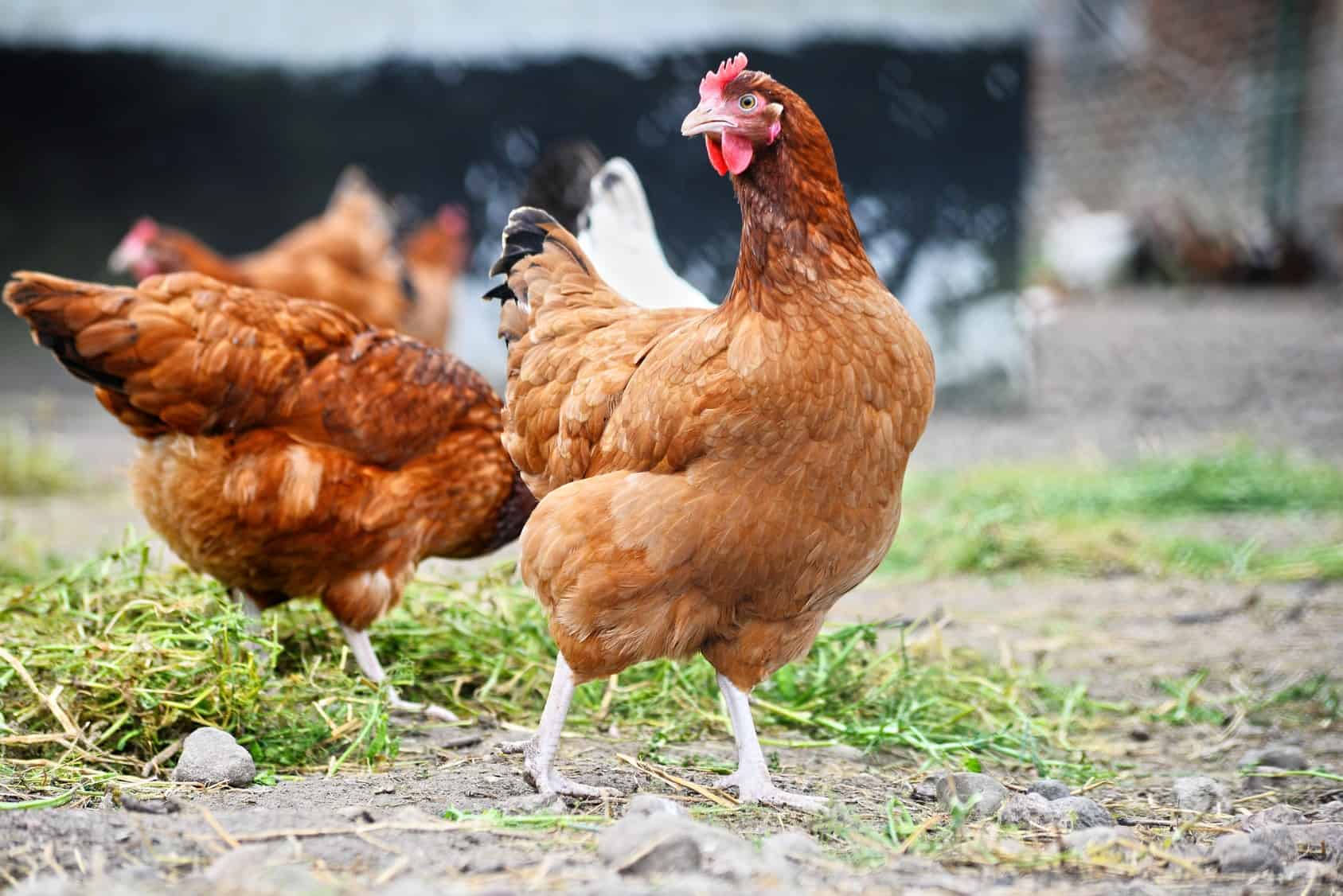
Balanced Diet
Providing a balanced diet is essential for maximizing chicken lay in chicken husbandry. A balanced diet should include proteins, carbohydrates, fats, vitamins, minerals, and other dietary components. The diet must be tailored to the needs of the individual bird. For example, a laying hen needs more calcium than a non-laying one.
Appropriate Housing
Providing appropriate housing is also important for maximizing chicken lay. The housing should be spacious, well-ventilated, and provide protection from predators. The housing should also be kept clean and dry to prevent the spread of diseases. The housing should also provide adequate space for the birds to move and interact.
Breeds of Chickens Suitable for Laying Eggs
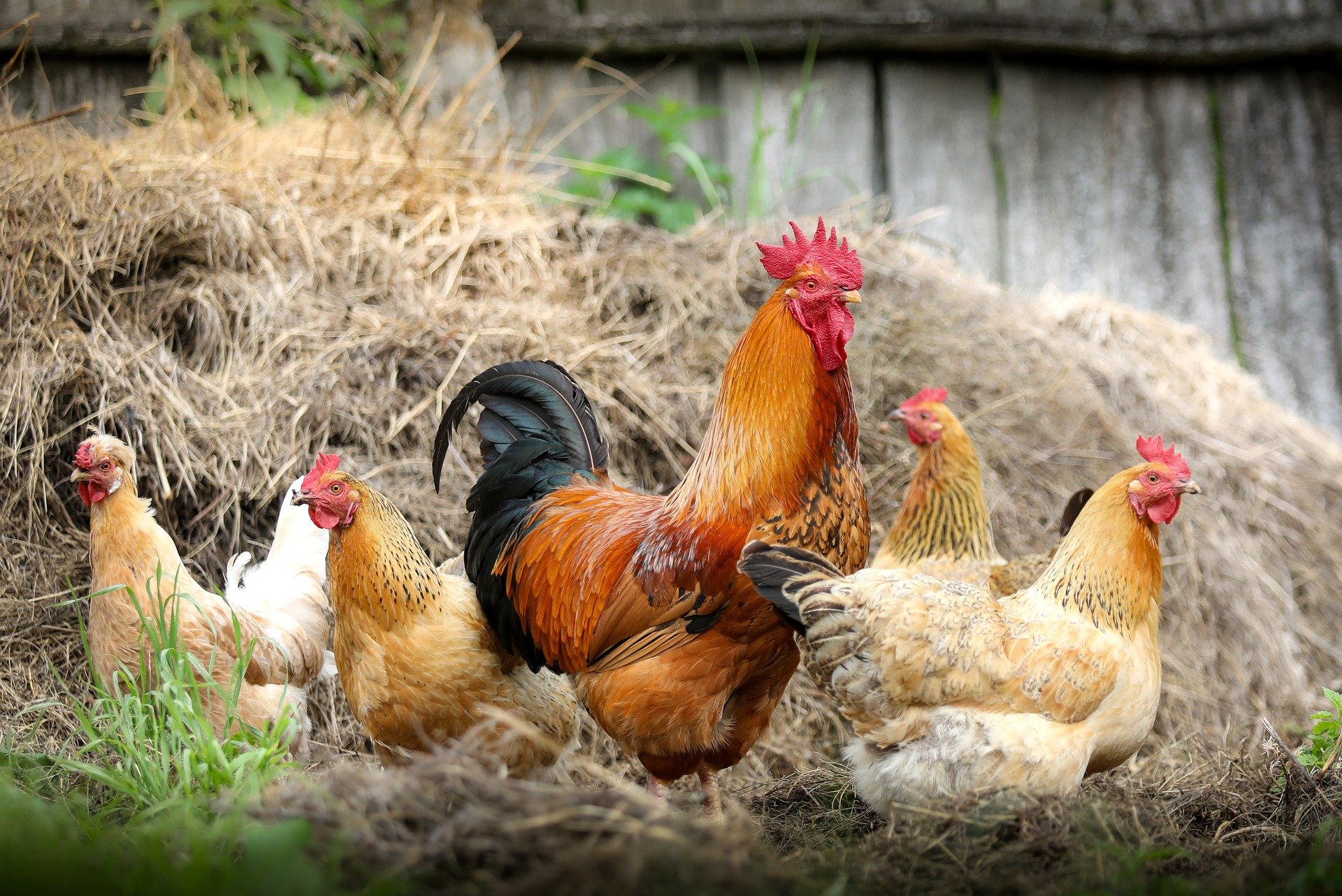
When deciding to maximize your chicken lay, it is important to consider the breed of chicken you are raising. Different breeds of chickens will produce different quantities of eggs, and some may be more suitable for your individual needs. Here are a few breeds that are particularly known for their egg-laying abilities:
- Leghorn – Leghorns are a Mediterranean breed that can lay up to 280 eggs per year. They are typically white in color and have a single comb.
- Rhode Island Red – This breed is a popular one amongst chicken owners and is known for being hardy and producing up to 250 eggs per year. Rhode Island Reds can be either red or black in color.
- Araucana – This breed is native to Chile and is known for its blue-green eggs. Araucanas will typically lay around 200 eggs per year.
- Sussex – Sussex chickens are a British breed that can lay up to 250 eggs per year. They come in several color varieties, including light, speckled, brown, and white.
- Orpington – Orpingtons are a British breed that can lay up to 200 eggs per year. They are popular for their fluffy, soft feathers and come in a wide range of colors.
- Ancona – Anconas are an Italian breed that can lay up to 200 eggs per year. They have white feathers with black spots and a single comb.
- Fayoumi – This breed is native to Egypt and can lay up to 150 eggs per year. They have a single comb and come in several color varieties, including white and brown.
When selecting a breed of chicken for your flock, consider the climate, space, and resources you have available. Different breeds will require different amounts of feed and space, so it is important to choose a breed that is well-suited to your environment.
Age of Hens and How Many Years They Lay Eggs
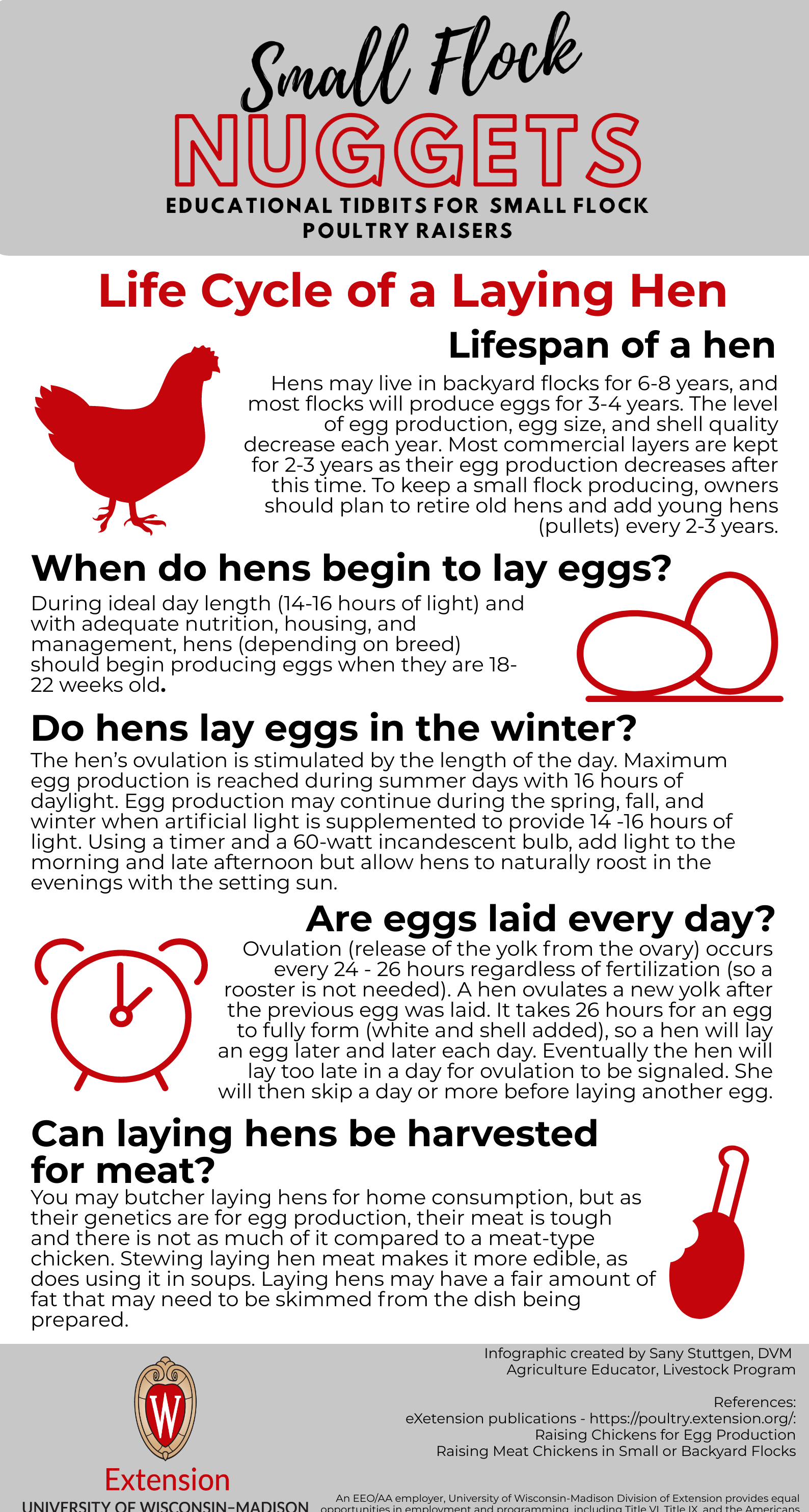
The peak laying period of a healthy hen is usually between two and four years. During this time, the hens will lay an average of 300 to 350 eggs each year. After four years, the egg production of the hen will start to decline, and they will produce fewer eggs each year. However, if the hens are well-cared for, they can continue to lay eggs for up to 8 years.
Commercial laying hens are typically only kept for two years before being replaced with younger birds for egg production. This helps to ensure that the egg production remains high and that the hens are healthy and happy.
For backyard chicken keepers, it is not uncommon for hens to live well beyond their peak egg-laying years. If they are well-cared for and provided with adequate nutrition, some hens can live up to 10 years or more.
Bottom line: Hens typically lay the most eggs between two and four years of age. Commercial laying hens are typically only kept for two years, but backyard chickens can lay eggs for up to 8 years or more if they are well-cared for.
Egg Collection and Storage
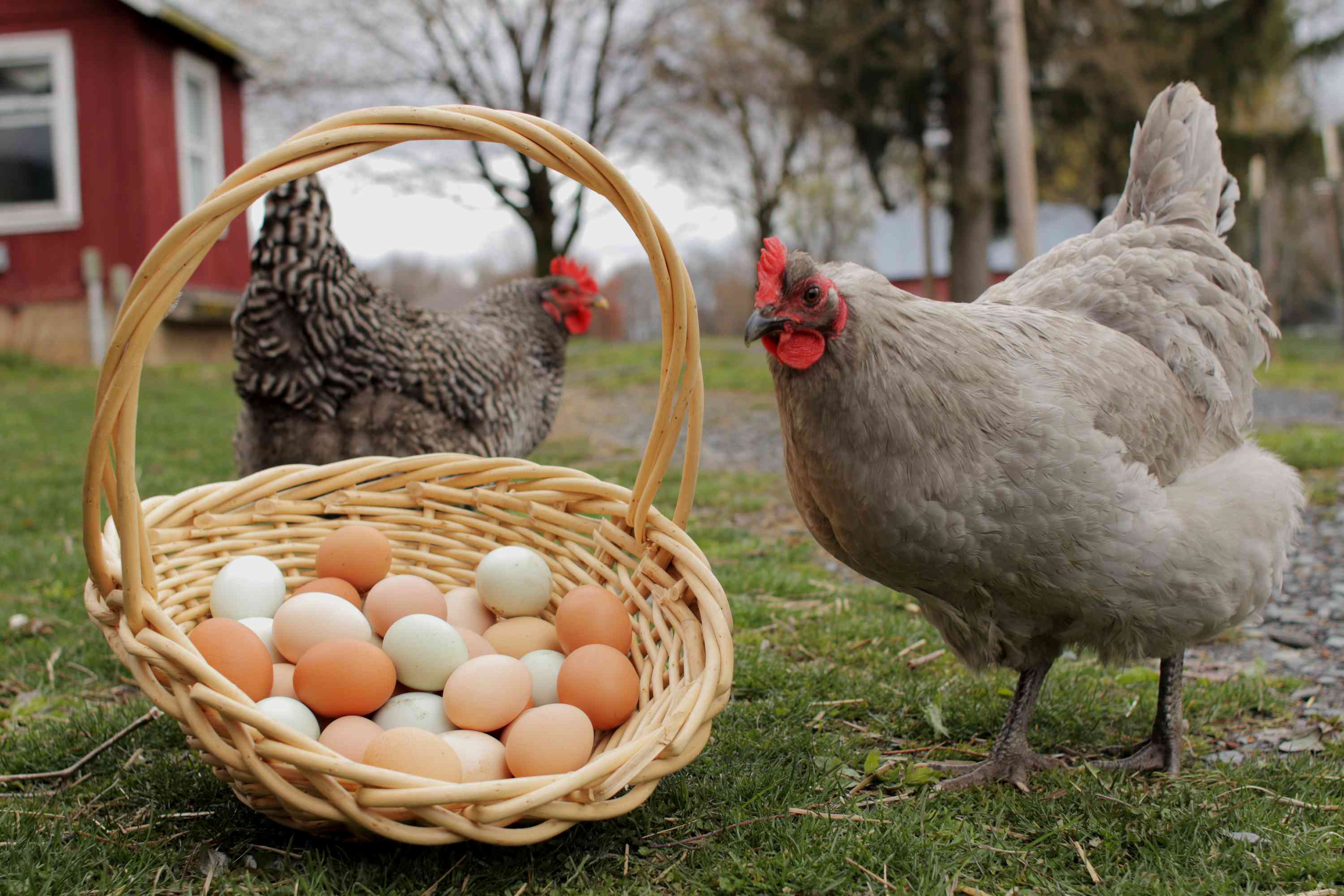
Regular collection: Eggs should be collected at least twice a day, preferably three times, to prevent them from being soiled or cracked by the chickens.
- Gently remove any eggs left in the nesting boxes.
- Hold each egg in one hand while using the other hand to lightly brush away any dirt or debris.
- Put the eggs in a separate container.
Storage: Store eggs in a cool, dry place away from direct sunlight.
- Eggs should be stored in a container that is well ventilated, such as a basket or tray with holes.
- Place the container in a refrigerator at a temperature between 33°F and 40°F.
- Eggs can also be stored at room temperature for up to a week.
Disease Prevention
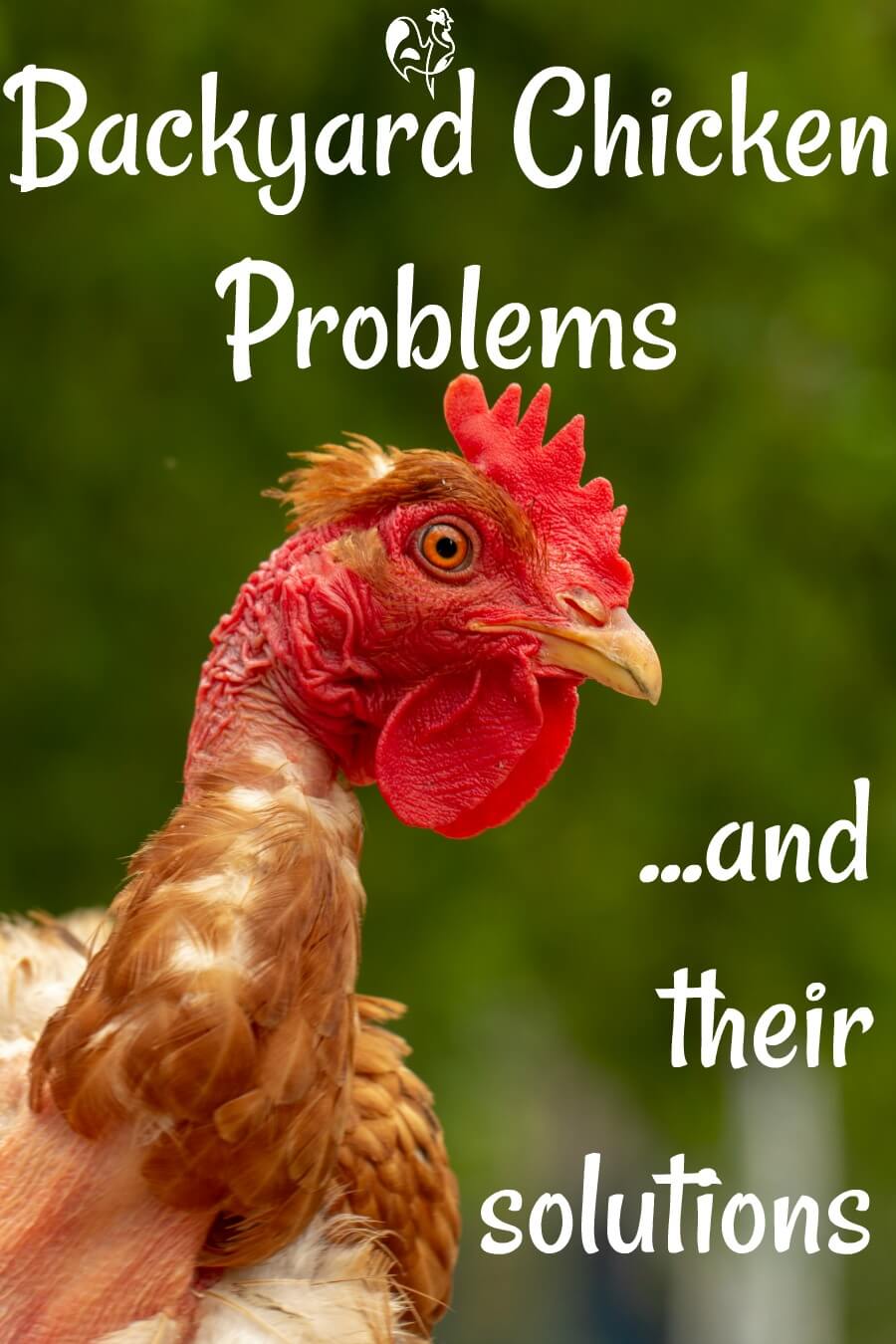
Cleanliness: Keeping the chicken farm clean is one of the most important steps in disease prevention. This includes regular cleaning of the house and surrounding areas, as well as proper disposal of chicken waste. Additionally, providing a dust-free environment and good ventilation can also help reduce the risk of disease.
Vaccination: Vaccinating chickens against common diseases is essential to preventing outbreaks. Vaccines should be administered to the chickens at regular intervals, as well as when new birds are added to the flock.
Biosecurity Measures:
- Restrict access to the farm, only allowing necessary personnel and visitors.
- Ensure visitors are wearing clean clothing and footwear before entering the farm.
- Disinfect equipment that is brought into the farm.
- Avoid contact with wild birds and other poultry farms.
- Isolate any new birds before introducing them to the flock.
- Monitor the flock for signs of disease.
Nutrition: Ensuring that chickens are provided with a balanced diet can help prevent disease. This includes providing the birds with a nutritious feed, as well as access to clean water and essential vitamins and minerals. Additionally, providing the birds with plenty of space to roam and forage can also help reduce the risk of disease.
Artificial Lighting
- Install Lights: Install artificial lights in the chicken house to ensure adequate light throughout the day. Place the light in a secure spot, such as the ceiling, and make sure it is sealed against water and dust.
- Set Timer: Set the timer to ensure that the lights turn on and off at specific times. This will ensure that the chickens have enough light during the day and darkness during the night.
- Provide Shade: Provide shade to protect the chickens from the direct sunlight. This will help them to stay cool and comfortable in the hot weather.
- Install Heat Lamp: Install a heat lamp in the chicken house during the cold months to provide extra warmth. Make sure that it is properly secured and that the chickens have enough space to move around.
- Monitor Temperature: Monitor the temperature of the chicken house to make sure that it does not get too hot or too cold. Adjust the lights accordingly to maintain optimal temperature.
Frequently Asked Questions
What Breed of Chicken is Best for High Egg Production?
Leghorn: This breed is especially known for its high egg production. They are white in color and can lay up to 300 eggs per year.
Rhode Island Red: This breed is known for its hardiness, making them easy to maintain. Rhode Island Reds are also prolific layers, often laying up to 250 eggs per year.
Golden Comet: This hybrid is a cross between a White Leghorn and a Rhode Island Red. It has a slightly lower egg production than the two purebreds, but still lays up to 250 eggs per year.
Plymouth Rock: This breed is known for its good temperament. Plymouth Rocks lay up to 200 eggs per year.
Araucana: This breed is known for its blue eggs. Araucanas are a bit less prolific layers than some other breeds, but they still lay up to 150 eggs per year.
How Often Should Chickens Be Fed for Optimal Egg Production?
Chickens should be fed a high-quality, nutritionally balanced diet twice daily, at the same time each day. A variety of fresh, whole grain feed should be provided, such as wheat, oats, corn, and barley, as well as supplements of calcium, vitamins, and minerals. Scratch grains such as millet, sunflower seeds, and cracked corn can also be provided, but should only make up 20-30% of the diet, as it is not as nutritionally balanced as a complete feed. Additionally, fresh, clean water should be available at all times.
What type of housing is best for maximizing chicken lay?
The most important factor to consider when maximizing chicken lay is the type of housing used. Keeping chickens in proper housing that has adequate ventilation and protection from the elements is essential for maximizing egg production. A spacious, predator-proof chicken coop with plenty of perches, nesting boxes, and roosts will allow chickens to move around and feel safe and secure. Additionally, providing chickens with a safe and comfortable outdoor run that is also predator-proof will give them the opportunity to exercise and forage for food.
How can I ensure my chickens are getting the nutrition they need to maximize egg production?
- Provide a Balanced Diet: A balanced diet is essential for ensuring your chickens get the nutrients they need to maximize egg production. Provide them with a diet that includes a variety of grains, greens, vegetables, and protein sources such as insects and mealworms.
- Ensure Adequate Calcium: Calcium is essential for laying hens to produce eggs with strong shells. Provide your chickens with a source of calcium, such as crushed eggshells or oyster shells, to ensure they get enough to maximize egg production.
- Provide Vitamins and Minerals: Vitamins and minerals are essential for ensuring your chickens stay healthy and produce eggs. Provide your chickens with a vitamin and mineral supplement to make sure they get all the nutrients they need.
- Provide Enough Space: Crowding can lead to stress and poor health, which can reduce egg production. Ensure your chickens have enough space to move around and forage for food, and avoid overcrowding.
- Provide Fresh Water: Fresh water is essential for keeping your chickens healthy and producing eggs. Make sure there is always a source of clean water available for your chickens, and change it regularly to avoid contamination.
What Environmental Factors Should I Consider When Maximising Chicken Lay?
When maximising chicken lay, it is important to consider the environmental factors that could influence the productivity of your chickens. These environmental factors include: nutrition, housing, temperature, ventilation, and light. Nutrition is essential for chickens to be productive, providing them with the right balance of macronutrients and micronutrients. The housing should be comfortable and secure, with enough space for the chickens to move around. Temperature and ventilation should be controlled, and light should be provided to stimulate the chickens to lay eggs. By considering these factors, you can ensure that your chickens are in an ideal environment to maximise their laying potential.
Conclusion
Maximizing chicken lay in chicken husbandry is possible with a few simple steps. Ensuring quality feed with the right balance of nutrition, maintaining the coop and nesting boxes, and providing adequate light and exercise are all important factors. Additionally, selecting breeds based on their egg-laying capabilities and providing the right environment with the right temperature and humidity are also important considerations. Taking these steps will help ensure that chicken owners get the most out of their flock.
